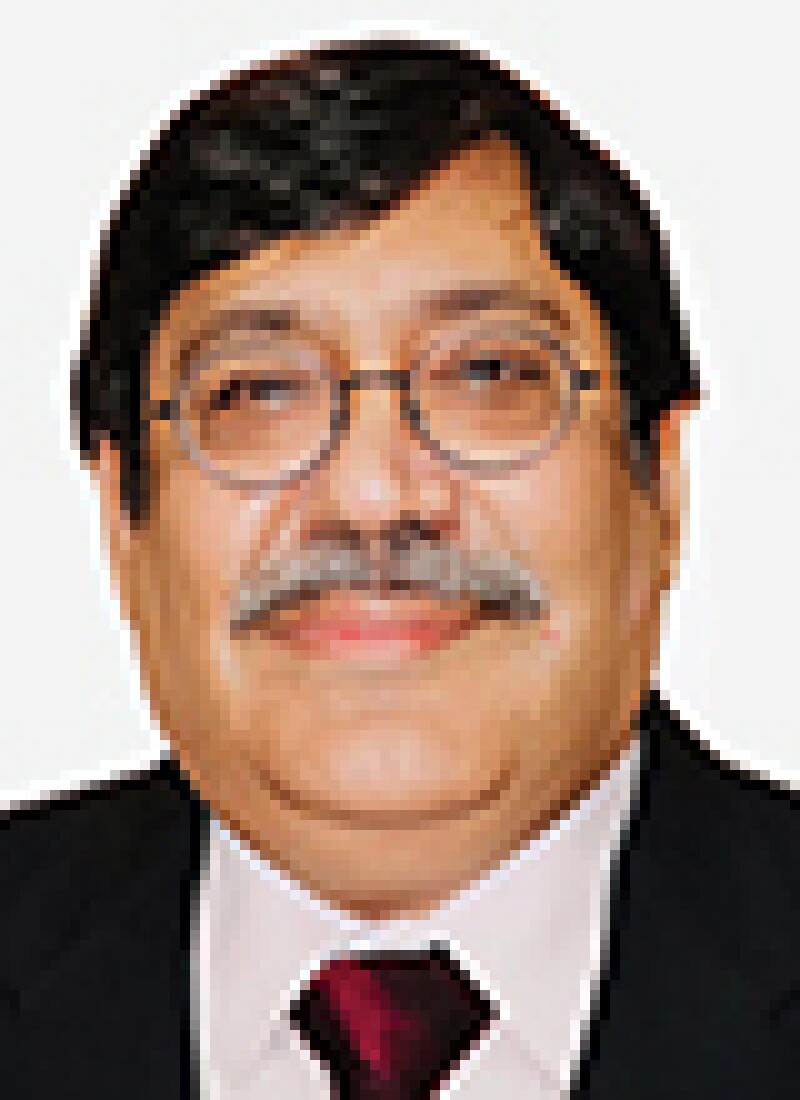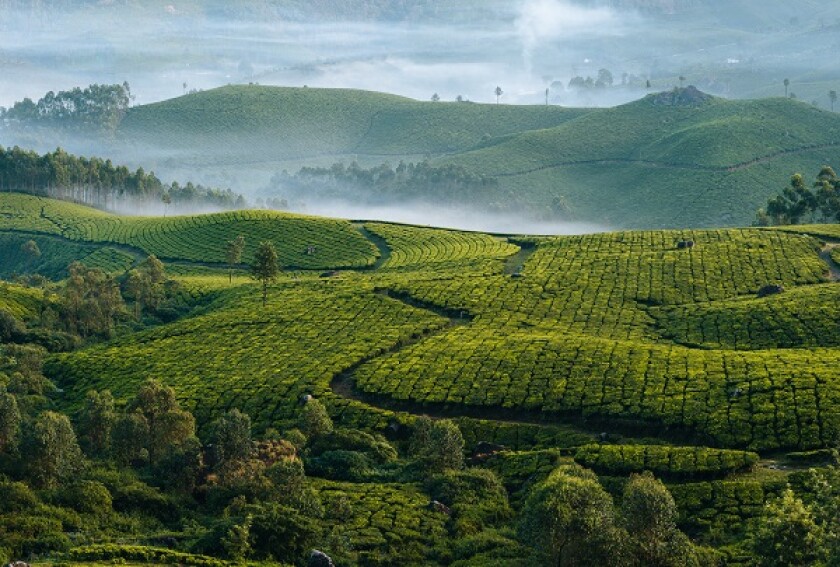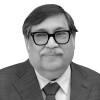I. Introduction
This article will examine some recent trends in the Indian intellectual property landscape, some procedural issues and some substantive issues.
1) On the procedural side, the most momentous change has been the time revolution, not only before the courts and tribunals but before the Patent and Trademark Offices in prosecution matters as well.
2) Root and branch changes brought in by the Commercial Court Act as per which a lawsuit can conclude within one to two years.
II. New modes of serving the defendant
Service of defendants can be done instantaneously through email, SMS or even WhatsApp. Thereafter, the lawsuit progresses with strict deadlines, which if missed, could result in dismissal of the lawsuit or decree of the suit.
The most important and critical deadlines are as follows:
filing of the written statement by the defendant, within a maximum 120 days;
filing the replication by the plaintiff, within 45 days of the written statement;
compliance after obtaining an injunction within a day or up to a week or so, as ordered by the court; and
appeals from an order of the judge or the registrar, a month or 15 days respectively.
III. Length of proceedings before Trademark and Patent Office and IPAB
a) Time changes have also come about at the Patent Office, as a patent can be granted within a period of two to four years and a trademark registered within one to one and a half years.
b) The speed with which the Intellectual Property Appellate Tribunal is hearing and deciding matters is also unprecedented.
c) As practical advice to anyone whose case or matter is delayed or stuck, courts and tribunals are regularly entertaining applications for early hearing of cases.
IV. Case management
The next big change relates to case management by judges who can regulate:
the number of witnesses;
the duration of cross examination; and
the duration of interim or final arguments.
Judges are not just holding the ring but actively pushing the matter forward suggesting mediation or settlement or passing summary judgment when they do not see a need for a full trial.
V. Recording of evidence made easy
a) Another change is the collection of evidence. Local Commissioners are appointed regularly (retired judges or senior lawyers) to record evidence. The proceedings can be flexible as to place, date and time.
b) It is usual for evidence to be recorded at the business centre of a hotel over the weekend and beyond court hours.
c) Where witnesses are unable to be present physically due to illness or retirement or otherwise, evidence has been recorded via video conferencing.
VI. Flexible approach while adjudicating IP disputes
i) During the COVID-19 months, the courts, at all levels (District, High Courts and Supreme Court) adopted virtual hearings enabling anyone from India or overseas to attend a hearing. Judges agreed to screen sharing and lawyers in a team were able to collaborate from their respective homes or offices.
ii) Another recent trend is a liberal and flexible approach to remedies. IP cases involve injunctions and Anton Piller orders at the interim stages. They involve damages both compensatory and punitive at the final stage. Courts also grant Mareva injunctions to freeze bank accounts etc. There are also John Doe orders where the identity of the counterfeiter is unknown.
iii) The Indian Courts have taken remedies to another level. Actual costs are granted to a winning party. If the defendant is found to be an infringer, he is made to pay back to society, in some way, even if he does not have the finances to pay damages to the plaintiff. He may be asked to plant thousands of trees to check pollution and thus benefit the public; to provide community service at an old age home or at an orphanage; to donate to a hospital or a cancer society, etc.
iv) In recent years, electronic evidence has become admissible. Hence, internet downloads to prove a case of passing off are far simpler pieces of evidence than trying to pull out old records such as invoices, orders and advertisements. Photographs from a digital camera, video footage, drone evidence etc. can help prove a case. A certain procedure under Section 65B of the Evidence Act needs to be followed.
VII. Developments in disputes related to IP
Trademark disputes
a) In trademark cases, the plaintiff may seek a declaration that the trademark is well known and if granted then the trademark is put on a register maintained by the Trademark Office which has fewer than 100 trademarks on it. The strength of being well known is that the proprietor can stop misuse of the mark on any goods and services and the trademark does not have to be used for all those different goods. The registry will raise a serious objection if anyone seeks to register the mark for different goods, even when the proprietor has failed to file an opposition.
b) In recent years, a large number of non-traditional trademarks have been protected by the Indian courts e.g. the Epi leather surface design of Louis Vutton, Berkin bags and the shape of Hermes, the shape of Zippo lighters and Ferrero Rocher chocolate with its crumpled gold foil in a tray etc.
Domain name disputes
c) The courts have also protected domain names and developed various rules related to this area. Harm caused by the internet can be massive due to the anonymity of the wrongdoer and vast affordable distribution in comparison with the physical world.
Trade secret disputes
d) In trade secret cases, it is now possible to set up a confidentiality club of lawyers and external experts (and sometimes representatives of the parties) who alone can see documents placed in a sealed cover.
e) The club members can inspect the documents, but copies cannot be taken.
f) The members must undertake an affidavit to honour the confidentiality of the documents.
Due to the above, it is now easier to obtain information on sales and gather expert data for computing damages. Sometimes the documents can even be redacted or only be seen by attorneys or the judge.
Mediation
g) Another trend is to try mediation in most cases. In fact, mediation can be sought even before a lawsuit has commenced, known as pre-litigation mediation.
Patents and standard essential patent disputes
h) Patent cases are on the rise. The majority of these are pharma and agrochemical cases. Telecoms cases are a close second. Telecoms cases mostly concern standard essential patents (SEPs) where it is usual to prove infringement through claim charts that map the plaintiff's patent claims against some cellular or video standard (e.g. 3GPP or HEVC). The defendant's device is often tested and also mapped against the said standard.
i) In these cases, i.e. SEP cases, injunctions are rare and most interim orders concentrate on a financial deposit or a bank guarantee to secure the plaintiff, should he succeed at trial.
j) It is usual to have foreign expert witnesses prove infringement and defend validity or prove that the terms of the licence offered by the plaintiff are fair, reasonable and non-discriminatory (FRAND).
Copyright disputes
k) A large volume of copyright cases used to be software cases filed by members of the Business Software Alliance (BSA) but over the years, these have decreased in number. The cases started with piracy of floppy disks and then CDs. It changed to hard disk loading and then internet websites. It transitioned to end user piracy and now the cloud. Twenty years has seen a dramatic change in the digital environment.
l) In the music world, copyright cases of various collecting societies like IPRS (for musical composition and lyrics) or PPL (for recordings) have stabilised. The newest of the collecting societies, ISRA for singers, has a number of lawsuits concerning the establishment of its rights.
m) Film piracy is rampant and a common remedy is to get a John Doe order even before the release of a new film against a large number of named and unnamed parties who are believed to have indulged in piracy.
Modern disputes in modern times
Certain new types of cases are on the rise:
n) First are those cases concerning copyright in engineering drawings used to produce three-dimensional articles. The 3D reproduction is held to be infringement of copyright in the said drawings. Such cases are brought when no design or patent exists and a machine part or auto part, for example, is copied in its full dimensions.
o) Second are cases concerning comparative advertising in which competitors keep attacking each other and injunctions are granted against disparaging advertisements, as courts tolerate sales puff but not untrue statement or disparaging another's product. You may praise yourself but not defame another.
p) Third are cases relating to web portals and platforms selling legitimate goods and certain counterfeit goods. These platforms may be protected as intermediaries under Section 79 of the IT Act (Information Technology Act). The law is that if a brand owner invites their attention to such infringing products, they are obliged to take them down. If, however, the portal has actively participated in the sellers' business, then it may be considered a rogue website and not an intermediary. If this is the case, then the URLs may be restrained, and in some cases, the whole website may be restrained.
VIII. Plaintiffs' checklist of do nots
Before Indian courts, a plaintiff must remember a few things:
A) Never to conceal facts or hide things from the court. It is safer to overstate than understate.
B) Try not to delay filing a lawsuit as it may affect the balance of convenience and an interim injunction may be denied.
C) Never say no to a settlement offer. After considering it fairly, you may drop the settlement, but you should look fair before the court.
D) In patent matters, particularly relating to drugs, explore a quia timet action before the release or launch of the defendant's product.
E) Try and appoint a local person in India for quick filing as normally processes such as notarisation and apostille etc. through courier services can delay filing urgent actions, applications and appeals.
F) Always check the statement made during prosecution of either a patent or a trademark registration to ensure consistency.
G) Explore the writ jurisdiction for quick remedies where the Patent or Trademark Office is involved.
H) Explore the contempt jurisdiction in cases where a court order has been violated by the opposite party. This may bring an early settlement to your action.
Since nearly 70% of IP cases are filed before the Delhi High Court, most of the examples and learnings relate to this court. Having said that, it is imperative to mention that these principles are true for all High Courts having an original jurisdiction, apart from the Delhi High Court, namely Bombay, Madras and Calcutta.
インド知的財産権を取り巻く最近の情勢
I. はじめに
この記事では、インド知的財産権の最近の動向、いくつかの手続き上の問題、および重要な問題について考察します。
1. 手続き面での最も重要な変化は、裁判所や法廷だけでなく、特許庁や商標庁での起訴案件においても、時間的な革命が起こったことです。
2. 商事裁判所法による抜本的および詳細な変更に伴い、訴訟は1〜2年以内に完了することができます。
II. 被告への送達を提供する新しいモード:
訴状・呼出状の被告への送達は、電子メール、SMS 、さらには Whatsapp によって即座に行うことができます。その後、訴訟は厳格な期限において進行し、期限に遅れた場合は、訴訟の棄却または判決が出る可能性があります。
最も重要で必須の(容赦できない)期限は次のとおりです。
1. 被告による陳述書の提出、すなわち最長120日;
2. 原告による第二訴答、すなわち、陳述書から45日以内;
3. 裁判所の命令により、1日から1週間程度の差し止め命令を受けた後の遵守;
4. 裁判官または登録官の命令に対する不服申立て、すなわち、それぞれ1か月または15日間。
III. 商標特許庁および IPAB に対する時間的制約のある手続き:
a. 特許は2〜4年以内に付与され、商標は1〜1.5年以内に登録されるため、特許庁でも時間の変更が生じています。
b. 知的財産権控訴審判所が問題を審理し、解決する速度もまた前例のないものです。
c. 訴訟や事態が遅れている、または行き詰まっている人への実用的なアドバイスとして、裁判所は、裁判の早期審理の申請を定期的に受け入れています。
IV. 案件管理のヒアリング:
次の大きな変化は、次のことを規制できる裁判官による案件管理です。
1. 証人の数
2. 反対尋問の期間、および
3. 中間または最終弁論の期間。
裁判官は指揮を執るだけではなく、調停や和解を提案する、または正式裁判の必要性が見られない場合は略式判決を下すことを積極的に推進しています。
V. 証拠の記録を簡略化:
a. もう1つの変化は証拠の収集です。地方委員は、証拠を記録するために定期的に(退職した裁判官または上級弁護士から)任命されます。訴訟手続は場所、日時に関して柔軟に対応できます。
b. 通常、ホテルのビジネスセンターでは、週末および法廷時間外に証拠が記録されます。
c. 病気や引退などにより証人が実際に立ち会うことができなかった場合、証拠はビデオ会議を介して記録されました。
VI. 知的財産権紛争を裁定する際の柔軟なアプローチ:
i. 新型コロナウィルスのパンデミックが発生した数カ月間、裁判所はすべての段階(地区、高等裁判所、最高裁判所)で、インドまたは海外の誰もがヒアリングに参加できるようにするバーチャルヒアリングを採用しました。裁判官は画面の共有に同意し、チーム内の弁護士はそれぞれの家やオフィスから協力することができます。
ii. もう1つの最近の傾向は、法的救済への寛大で柔軟なアプローチです。知的財産権訴訟には、差し止め命令と暫定段階のアントン・ピラー(Anton Piller)命令が含まれます。それらは最終段階で補償的損害賠償および懲罰的損害賠償を伴います。裁判所はまた、銀行口座などを凍結するマリーヴァ差し止め命令(Mareva Injunction)を認めています。貨幣偽造者の身元が不明な場合には氏名不詳(John Doe)命令を発行します。
iii. インドの裁判所は救済策を別のレベルに引き上げました。実際の費用は、勝訴側に付与されます。被告が侵害者であることが判明した場合、原告に損害賠償を支払うための財源がなくても、被告は何らかの形で社会に返済することになります。被告は汚染をチェックするために何千本もの樹木を植えるように求められるかもしれません。そのようにして国民の利益につながります。それは、老人ホームや孤児院でのコミュニティサービスの提供や、病院やがん協会などへの寄付といったことです。
iv. 近年、電子的証拠が認められるようになりました。したがって、詐称通用の証拠を証明するのにインターネットからのダウンロードは、請求書、注文書、広告などの古い記録を引っ張り出すよりもはるかに簡単です。デジタルカメラからの写真、ビデオ映像、ドローンの証拠などが事例の正当性を証明するのに役立ちます。インド証拠法(Evidence Act)の第 65B 項に基づく特定の手順に従う必要があります。
VII. 知的財産権 に関する紛争の進展:
商標紛争:
a. 商標訴訟の場合、原告は商標がよく知られているという宣言を求めることができ、認められた場合、商標は 100 件未満の商標を有する商標局が管理する登録書に記載されます。よく知られていることの強みは、所有者があらゆる商品やサービスでのマークの誤用を停止できることであり、商標はそれらすべての異なる商品に使用される必要はありません。所有者が異議申立に失敗した場合でも、誰かが別の商品にその商標を登録しようとした場合、登記所は重大な異議を提起します。
b. 近年、多くの非伝統的な商標がインドの裁判所によって保護されています。たとえば、ルイ・ヴィトンの「エピ」型押しデザイン。バーキンのバッグとそのエルメスの形状。ジッポライターの形状。トレイに並んだくしゃくしゃにした金箔で包んだフェレロ・ロシェのチョコレートなど。
ドメイン名の紛争:
c. 裁判所はまた、ドメイン名を保護し、次のような原則を開発しました。物理的な世界と比較して、インターネット上の被害は、不正行為者の匿名性、および非常に安価に広く流通できるため甚大となる可能性があります。
企業秘密の紛争:
d. 企業秘密の場合は、弁護士と外部の専門家(そして時には当事者の代表者)の機密保持クラブを設置して、封印されたカバーに入れられた文書を自分たちのみが閲覧することができるようになりました。
e. クラブ会員は文書を閲覧できますが、コピーを取ることはできません。
f. メンバーは、文書の機密性を尊重するために宣誓供述書を作成する必要があります。
上記により、被害の算出のため売上高や専門家データの発見がより簡単になりました。時には、文書を編集したり、弁護士や裁判官だけが閲覧したりすることさえできます。
調停:
g. もう一つの傾向はほとんどの場合、調停を試みることです。実際、訴訟が始まる前でも、調停を求めることができます。これは、訴訟前調停と呼ばれます。
特許および標準必須特許紛争:
h. 特許訴訟が増加しています。これらの大半は製薬および農薬に関する訴訟であり、通信技術関係の訴訟が僅差の2位です。通信技術関係の訴訟は、ほとんどが標準必須特許(SEP)であり、一部の移動体通信または動画規格(3GPPまたはHEVCなど)に対し、原告の特許請求をマッピングした請求表を通じて通常、侵害を証明します。多くの場合、被告のデバイスは検証され、また上記の基準に対しマッピングされます。
i. このような場合、つまりSEP の場合、差し止め命令はまれであり、ほとんどの仮命令は、原告が裁判で成功した場合に、原告を確保するための金融保証金や銀行保証に集中しています。
j. 侵害を証明し、正当性を擁護するために、または原告が提示したライセンスの条件が公正、合理的、かつ非差別的(FRAND条件)であることを証明するために、外国人専門家の証人を立てるのが通常です。
著作権論争 :
k. かつては、ビジネスソフトウェアアライアンス(BSA)のメンバーによって提出されたソフトウェア訴訟が著作権訴訟の多くを占めていましたが、年々、これらの訴訟の数は減少しています。この訴訟は、まずフロッピーディスクの違法コピーから始まり、次に CD の違法コピーが始まりました。それはハードディスクの読み込みとインターネット Web サイトへと変わりました。IT 部門は、エンドユーザーの違法コピーに移行し、現在はクラウドに移行しています。20年の間に、デジタル環境は劇的に変化しました。
l. 音楽の世界では、IPRS(作曲や歌詞に関して)やPPL(録音に関して)などのさまざまな著作権料徴収団体の著作権訴訟が落ち着いてきています。最新の徴収団体であるインド歌唱者権利管理協会(ISRA - for Singer Performers)は、その権利を確立するために多くの訴訟を起こしています。
m. 映画の著作権侵害は横行しており、一般的な救済策は、著作権侵害に加担したと考えられる多数の有名無名の団体に対して、新しい映画をリリースする前であっても、氏名不詳(John Doe)命令を取得することです。
現代における紛争:
特定の新しいタイプの訴訟が増加しています。
n. 第1は、 3次元の物品を作成するために使用される機械製図の著作権です。3D複製は、上記の図面の著作権の侵害とみなされます。このような場合は、設計や特許が存在せず、機械部品や自動車部品などが完全な寸法でコピーされた場合に提起されます。
o. 第2は、比較広告の訴訟です。競合各社が互いに攻撃し続け、裁判所は、誇大広告は容認しても、虚偽の説明や他社製品の中傷は認められないため、中傷的な広告に対して差し止め命令が認められます。自身を賞賛することは可能ですが、他人を誹謗中傷することはできません。
p. 第3の種類は、正規品および特定の偽造品を販売する Web ポータルとプラットフォームです。これらのプラットフォームは、 IT 法(情報技術法)の第 79 条に基づく仲介者として保護される場合があります。この法律により、ブランド所有者がそのような特許侵害製品に注意を促した場合、それらを取り下げる義務があることです。ただし、ポータルが販売者の事業に積極的に参加している場合は、仲介者ではなく不正な Web サイトと見なされる可能性があります。この場合、 URL が制限され、場合によってはウェブサイト全体が制限されることがあります。
VIII. 原告の「禁止事項」のチェックリスト:
インドの裁判所の前では、原告はいくつかのことを覚えておく必要があります。
A. 裁判所に事実を隠匿したり、もみ消したりしないでください。過小に表現するよりも、過剰に述べる方が安全です。
B. 提訴を遅らせないようにしてください。便宜の均衡に影響し、仮処分が却下される可能性があるためです。
C. 決して和解案の提示を拒否してはいけません。公正に検討した後は、和解を取り下げることができますが、裁判所の前では公正に見えるべきです。
D. 特許問題、特に医薬品関連では、被告の製品のリリースまたは発売前に予防的(QUIA TIMET)訴訟を検討してください。
E. 国際宅配便による公証やアポスティーユなどの通常の手続きは緊急の訴訟、申請、不服申立ての提出を遅らせる可能性があるため、迅速な提出のためにはインドの現地人を指名するようにします。
F. 一貫性を保つために、特許または商標登録の訴訟中に行われた陳述書を常に確認してください。
G. 特許庁や商標庁が関与している場合の迅速な救済策については、令状管轄権(writ jurisdiction)を調べてください。
H. 相手側当事者が裁判所命令に違反した場合は、法廷侮辱罪を調べてください。これはあなたの訴訟に早期の解決をもたらすかもしれません。
知的財産権訴訟の約 70%近くはデリー高等裁判所に提訴されているため、ほとんどの事例と得た知識は、上記の裁判所に関連しています。とはいえ、デリー高等裁判所、つまりボンベイ、マドラス、カルカッタを除けば、これらの原則は本来の管轄権を有するすべての高等裁判所に当てはまることを言わざるを得ません。

Pravin Anand
Pravin Anand is the managing partner at Anand and Anand and has over 40 years of experience in IP litigation and dispute resolution.
He has worked on some landmark cases including Merck and Hermes (social damages); Ferid Allani (software patenting); Pioneer Overseas Corporation (DNA testing in plant varieties); Philips v Amazestore (aggravated damages); Philips v Rajesh Bansal (India's first post-trial SEP judgment) and Merck v Glenmark (first patent lawsuit decided in plaintiff's favour post-trial).
He has contributed to a number of lawsuits concerning damages in the area of IP litigation in India.
Mr Anand is a Legal 500 Hall of Famer, FT's "Most Innovative Lawyer – Asia Pacific" and consistently honoured by IBLJ, MIP, WTR, WWL, Chambers, WIP and IAM.
Pravin Anand は、Anand and Anand の業務執行社員であり、知的財産権訴訟および紛争解決において40年以上の経験があります。
Anand氏の最近の目覚ましい担当事例は、 Merck 対 Hermes の事例(社会的損害)、 Ferid Allani (ソフトウェア特許)、 Pioneer Overseas Corporation (植物種の DNA 検査)、 Philips 対 Amazestore (深刻な損害)、 Philips 対 Rajesh Bansal (インド初の審理後の標準必須特許(SEP)判決)、および Merck 対 Glenmark (原告の審理後の裁判で決定された最初の特許訴訟)などです。
Anand氏は、特許および商標訴訟における最大の損害賠償を含む、インドの知的財産権訴訟においてかなりの数の損害賠償訴訟に貢献しています。
Anand 氏は Legal 500 に殿堂入りしており、 FT の「最も革新的な弁護士–アジア太平洋地域」です。 IBLJ 、 MIP 、 WTR 、 WWL 、 Chambers 、 WIP 、 およびIAM から継続的に称賛を受けています。










